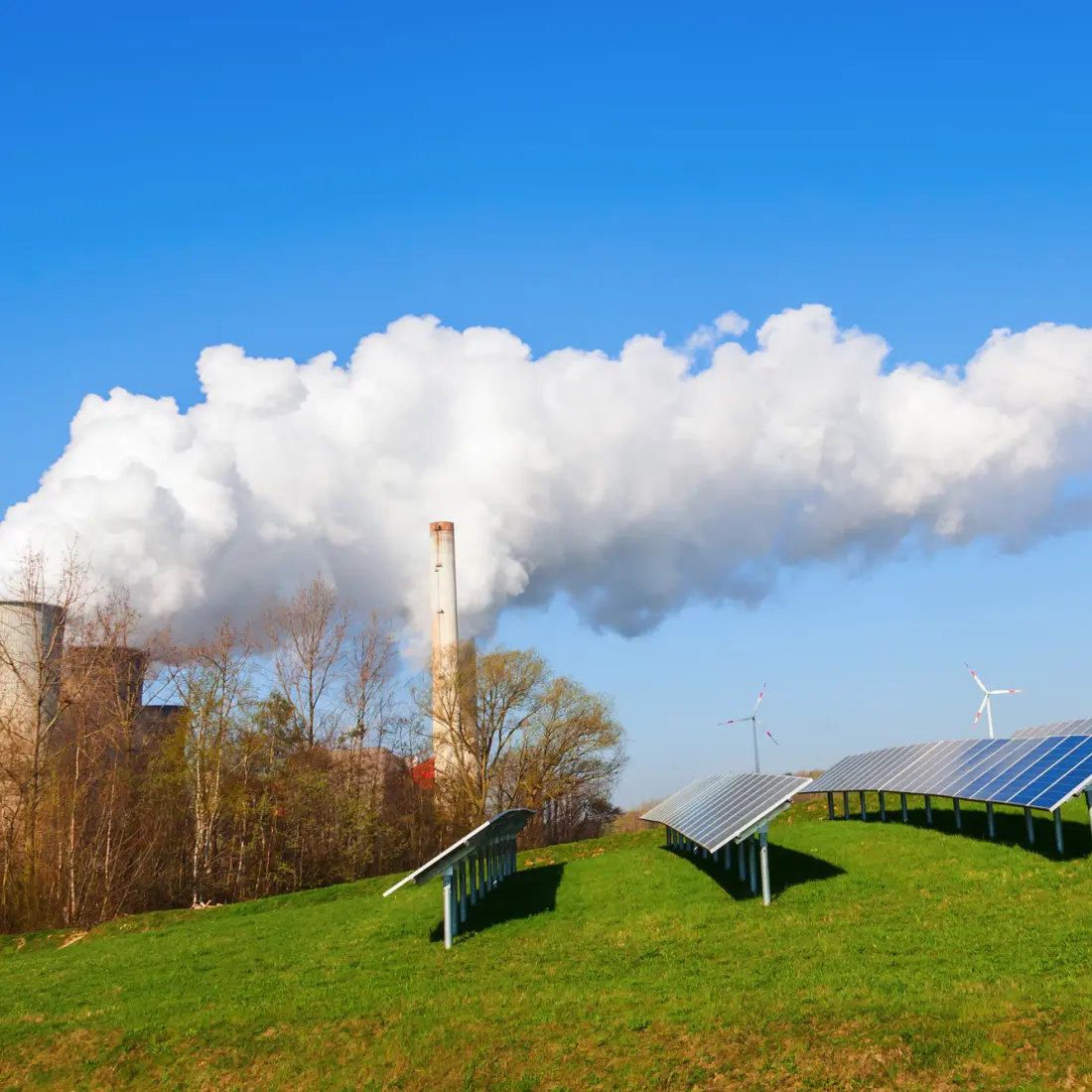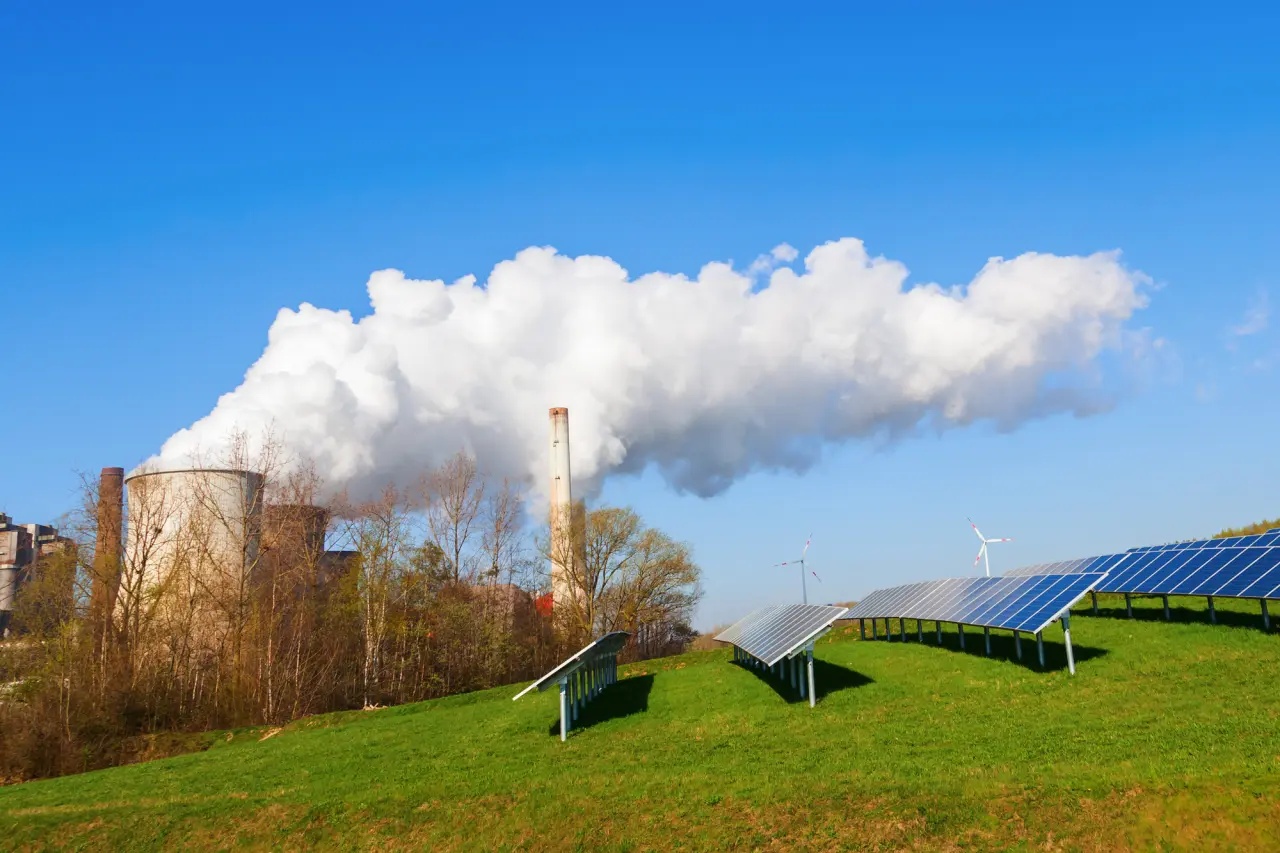Solar energy vs. fossil fuels: what's the difference?


The American economy is highly dependent on fossil fuels. In 2023, 60% of the nation’s energy came from fossil fuels while 21.4% came from renewable resources. While renewable energy is expected to grow in the coming years, it still has a long way to go.
Solar power has the potential to be the main driver in renewable resource adoption. Learn more about the differences between solar power and fossil fuels and why solar can change the energy environment.
What is solar energy?
Solar energy uses the power of the sun to create energy. It’s collected through photovoltaic (PV) panels and can be temporarily stored in solar batteries. While the sun’s rays are free and endless, the PV panels used to collect them are becoming more advanced and affordable than ever. This makes solar more accessible.
What are fossil fuels?
Fossil fuels include oil, coal and natural gas. They are non-renewable resources that are extracted from the earth and then burned to create energy. Fossil fuels were created when prehistoric plants and animals died and were buried under several layers of rock and soil. They are considered non-renewable because they take so long to form and there is a limited supply.

Environmental impact
Fossil fuels harm the environment twice: when they are extracted from the ground and when they are burned for fuel. They have far-reaching negative impacts on plant and animal life, along with negative health effects on the humans that use them. Here are a few examples of their impact.
Air pollution
Fossil fuels create air pollution, which has far-reaching effects across the planet. Poor air quality leads to increased rates of asthma, cancer, and heart disease. Small children with developing lungs often feel the effects of air pollution more than adults. The United Nations reports that transitioning away from fossil fuels could prevent 1.2 million deaths every year.
Fossil fuels also contribute to climate change by increasing the amount of carbon emissions in the air. Conversely, solar energy doesn’t produce any harmful emissions, exhaust, or smoke during production. It creates energy while keeping the air clean.
Water pollution
Fossil fuels use a large amount of water in production and then contaminate even more water because of carbon emissions, poor processing practices and accidents. For example, NOAA has an oil spill incident map where fossil fuels leaked into the environment, often into water sources.
Contaminated water can harm delicate ecosystems and wipe out endangered species. It can also prevent humans from accessing clean water and safe food.
Solar energy does not harm water resources and can even support drought-prone regions. Floating solar panels prevent evaporation, keeping water available for communities. One study estimates California could save 63 billion gallons of water per year if it covered its 4,000 miles of canals with floating panels.
Land use
Companies that extract fossil fuels often take over large swaths of land for drilling and mining. Researchers have found that emissions from land disturbed by fossil fuel harvesting are “comparable to or higher than emissions from land disturbed by farming crop-based biofuels.” Not only do oil fields and coal mines take up a lot of land, but they often leave the environment barren and inhospitable in their wake.
Conversely, solar panels can be installed almost anywhere. They can be added to existing structures or placed in parks, fields or above highway interstates. Site selection software can help individuals and companies find the ideal spots for their panels, but this energy resource is much more flexible. Some people even turn solar fields into pollinator gardens, supporting biodiversity while collecting energy.
Solar energy cost vs. fossil fuels
One of the biggest concerns when investing in solar energy is the cost. Here are a few factors that shape the decision-making process for adopting renewable energy resources.
Initial costs
The cost to install solar panels varies by location and the size of the system. In 2024, it cost between $14,000 to $21,000 on average to install solar panels on residential properties. This is much more expensive than paying a utility company monthly and continuing to use fossil fuels.
However, many people feel like making the switch is worth the investment. Solar panels last for decades, resulting in long-term savings that surpass the initial investments, and there’s a tax credit that relieves some of the initial burden. Plus, homeowners and businesses can feel good about using energy from clean, renewable resources.
Maintenance and repairs
The good news for anyone who wants to install solar panels is that they typically require little maintenance. The solar installation company you work with might cover the costs or offer annual maintenance plans. It’s natural for solar panels to degrade over the years, but this process can be slowed with regular care and upkeep.
Conversely, fossil fuel-based power plants often require costly repairs and constantly need updates. Consumers might not be aware of these large projects but often cover the costs through higher utility bills.
Availability and accessibility
There is good news for anyone worried about the cost of solar production: it’s more affordable than ever before and the cost of solar installation continues to fall. Demand for renewable options and investments in technology can make solar more affordable for the average person. This can also drive large-scale investments by enterprises and governments.
Fossil fuels, on the other hand, have a limited supply. They are more likely to become more expensive in the coming decades or face price fluctuations because of shifts in supply and demand.
Sustainability
Renewable energy is also significantly more sustainable than fossil fuels in multiple ways.
Renewable vs. finite resource
Fossil fuels are a finite resource. Experts estimate that the United States will run out of coal in 422 years. However, this depends on how coal is harvested and if the estimates of remaining reserves are accurate. The United States also has the largest percentage of world coal reserves.
However, the sun is an infinite resource. Its rays will continue to shine on Earth for another 5 billion years.
Energy independence
Solar energy can also support American society by promoting energy independence. This is the idea that the United States would not be reliant on other countries for fossil fuels. If an importing country enters a period of instability, the United States's energy needs would still be met.
Solar energy can also support individual energy independence. Homeowners and businesses can install solar panels to reduce or eliminate their dependence on utility providers. If the power grid gets overwhelmed, those with solar systems can get the electricity they need.
Reliability of energy supply
Renewable energy is also more reliable than fossil fuels. Here are a few ways solar panels are more accessible than coal, oil, and natural gas.
Availability
The sun shines everywhere on the planet. Though some regions are better suited to solar collection than others — Alaska, for example, isn’t ideal for solar because of its sunless winter days — the ability to install panels is much easier for the average person than collecting coil or drilling for oil.
Individuals who can’t install solar panels on their property can still get in on renewable energy harvesting. Community solar farms allow people who live in apartments or areas with prohibitive shade to still support renewable energy in their areas.
Dependence on external factors
Both solar energy production and fossil fuel extraction have geographical limits. Solar farms need to be built in areas with adequate sunny days to maximize production, while fossil fuel collection is limited to where miners can find coal and oil reserves. However, there’s much more space to collect the sun’s rays than there are places to drill for oil. A solar panel can be placed in a parking lot or installed atop a canal. In both cases, the surrounding environment isn’t disturbed.
Government policies
While individuals and businesses can take steps to invest in renewable resources, they won’t make a dent in the current dependence on fossil fuels in the United States. The federal government needs to further incentivize enterprises, local governments and American citizens to invest in solar energy. When millions of Americans step up and invest in clean energy futures, dependence on fossil fuels will decrease.
One way to do this is to offer additional tax credits to people who install solar panels or purchase electric vehicles. These tax credits reduce the financial burden of investing in clean energy, lowering barriers to using renewable resources. Local, state and federal governments need to convince Americans that going solar is the right thing to do and financially worth the startup costs. Otherwise, people will continue to choose the easiest route and the most affordable option at the moment: fossil fuels.
Solar energy is the future
In the end, the solar power versus fossil fuels debate is not about if solar energy will prevail — it’s about when. Fossil fuels are financially unsustainable because they become scarcer. Meanwhile, the cost of solar energy tech keeps going down, and the amount of sunlight available won’t diminish anytime soon.
However, it’s still crucial to take action now. As the world’s climate continues to change, governments, companies and individuals must take a clear-eyed view and speed the transition to solar energy for the good of the planet and humankind.